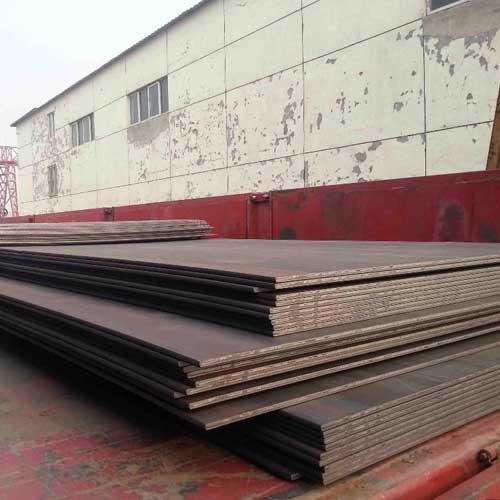Wear-resistant plates are essential in industries that handle abrasive materials, including mining, construction, and manufacturing. These plates enhance the lifespan of machinery and equipment by providing extra durability and saving costs on frequent repairs and replacements. Proper installation of wear-resistant plates is crucial for optimal performance and to ensure longevity in harsh working conditions. This guide will provide a step-by-step approach to installing wear-resistant plates to maximize their effectiveness and durability.
What Are Wear-Resistant Plates?
Wear-resistant steel plates are designed to withstand extreme abrasion, impact, and wear. Commonly made from materials like AR400, AR500, or chromium carbide overlay, these plates are harder and more resilient than standard steel. Their strength makes them ideal for surfaces exposed to constant friction and impact, such as chutes, hoppers, and dump truck beds.
Step 1: Assess Your Requirements
Before installation, it’s essential to evaluate the specific requirements of your application. Consider factors like:
- Intensity of wear and tear: How abrasive or impactful is the material coming into contact with the surface?
- Type of wear-resistant plate: Different materials and thicknesses are available for varying applications.
- Plate positioning: Some areas may require more coverage than others due to higher abrasion levels.
Understanding these requirements will help you select the right wear-resistant plate for your needs, ensuring optimal protection.
Step 2: Choose the Right Tools and Equipment
Using the appropriate tools is essential for accurate installation. Basic tools you might need include:
- Measuring tools (callipers, measuring tape)
- Cutting tools (saws, grinders)
- Welding equipment (if welding is required)
- Protective gear (gloves, goggles, etc.)
Always follow safety protocols when using these tools to prevent accidents. Wear-resistant plates are often thicker and harder than standard steel, requiring specialized equipment and techniques.
Step 3: Prepare the Surface
Preparing the installation surface is essential to ensure the wear-resistant plate bonds effectively and stays in place over time. Here’s what you should do:
- Clean the surface: Remove any rust, debris, or contaminants.
- Smooth the area: Grinding down uneven spots creates a stable foundation for the plate.
- Dry the surface: Ensure the area is dry before attaching the plate, as moisture can cause poor adhesion.
A clean and prepared surface helps to ensure a strong bond, minimizing any chances of the plate loosening over time.
Step 4: Position and Attach the Plate
It’s important to ensure precision and alignment when positioning the wear-resistant plate. Misalignment may cause premature wear and require frequent replacements. Common installation methods include:
- Bolting: If you plan to replace the plates regularly, bolting is an effective, removable solution. Drill holes in the plate and the surface, then fasten the plate with heavy-duty bolts.
- Welding: For a more permanent solution, welding is often preferred. Use hard-facing welding techniques to secure the plate to the surface.
- Adhesive Bonding: Industrial-strength adhesives can work for lighter plates. This method is quick but may not provide the durability needed for heavy applications.
Bolting or welding are typically more reliable for heavy-duty use, as they can withstand the constant friction and impact that wear-resistant plates endure.
Step 5: Inspect the Installation
Once the plate is installed, inspecting the placement and alignment is critical. Check for loose bolts or welding points to avoid wear and tear on the machinery or the plate. Here’s what to look out for:
- Secure fastening: Ensure that bolts are tightened or welds are properly bonded.
- Alignment: Check that the plate is positioned correctly without any visible gaps.
- Clean finish: Ensure no contaminants or particles are stuck on the plate or the surrounding area.
Periodic inspection and maintenance are crucial to maximize the lifespan of wear-resistant plates and keep the machinery in top condition.
Step 6: Maintain the Plates Regularly
Wear-resistant plates do not require extensive maintenance, but regular inspection can extend their lifespan. Some maintenance tips include:
- Cleaning the plates periodically to remove any dust or debris.
- Tightening bolts and checking welds for any cracks.
- Replacing or repairing any damaged plates promptly to prevent further wear on the equipment.
Regular maintenance also lets you catch early signs of wear, helping you avoid costly repairs.
Conclusion
Installing wear-resistant plates is a worthwhile investment for industries handling abrasive materials. Proper installation can significantly increase the durability and functionality of your equipment, making it more cost-effective in the long run. Remember, choosing the right tools, preparing the surface, securing the plate, and performing regular maintenance are key factors for successful installation.
If you want high-quality, wear-resistant plates and reliable installation advice, consider partnering with MetalOre. Their expertise and range of products can ensure that your equipment is well-protected against wear, making your operations smoother and more efficient.



More Stories
Boost Your Business with Digital Standees in Hyderabad
Mosquito Mesh Doors: Smart Home Investment for Protection
Legal Implications of Using a Virtual Office